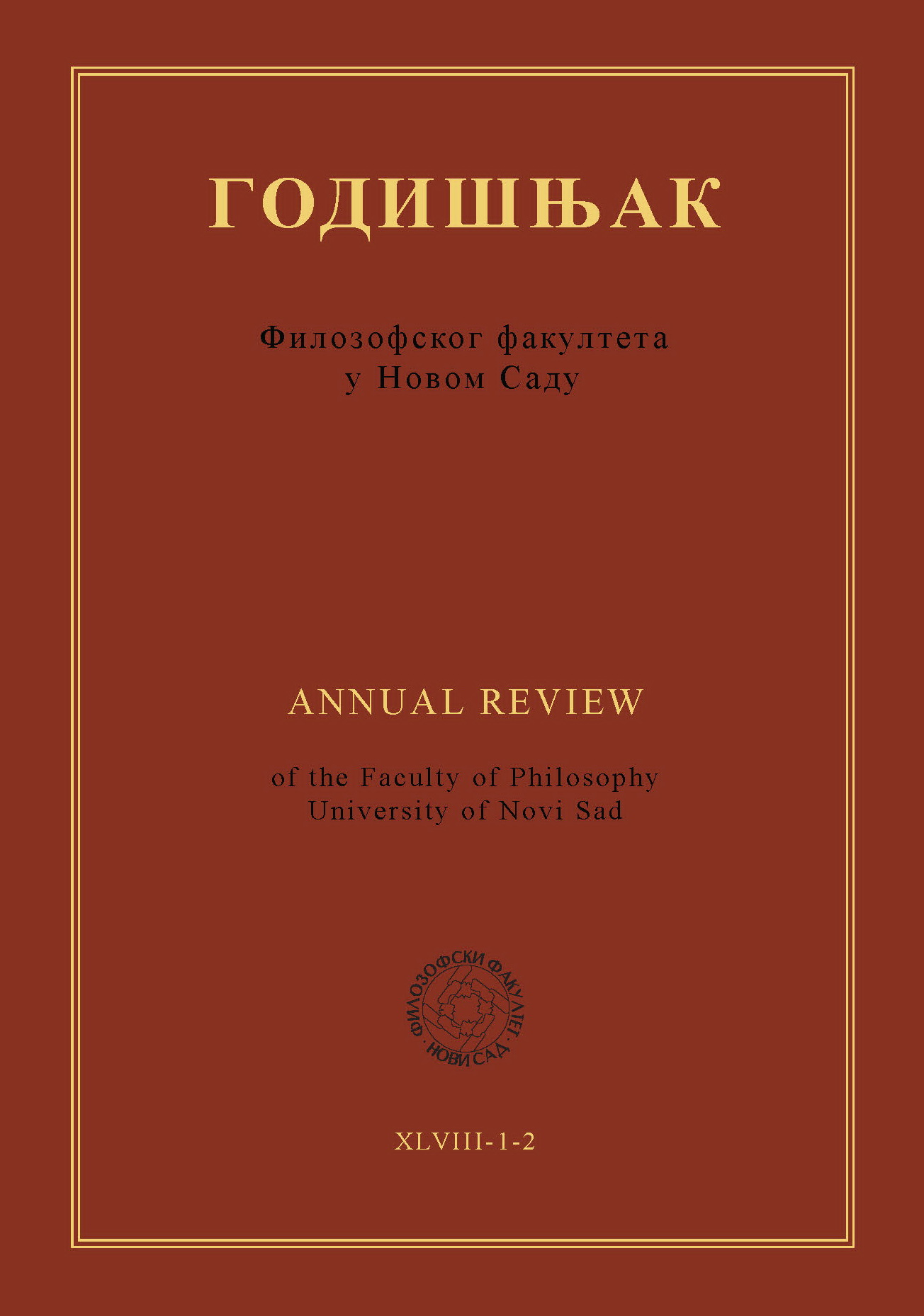USE AND TEACHING OF SEO, VOICE AND TONE GUIEDLIENES: A WORKPLACE-ENGLISH CASE STUDY
Main Article Content
Abstract
This qualitative, case-study research analyses workplace English (WE) to determine how the interplay of voice and tone guidelines and search engine optimizations (SEO) guidelines shapes the use of English in marketing content of an IT companies, as well as how much English teaching at the IT company caters to the needs of WE users in that respect. The research is based on two main resources: 1) a corpus of approximately 40 blogs and 100 website news articles which were compiled into a corpus in their draft, reviewed and post-SEO versions and 2) learning materials used in English classes for, allegedly, improving WE, including voice, style and SEO skills. The research was conducted in two phases. First, the revisions and edits in the corpus were identified and mapped to voice, tone, style and SEO guidelines, in order to see if edits do indeed target these aspects of WE use. Secondly, the teaching materials were analyzed to identify how they were crafted to address the main issues identified in the use of WE in respect of tone, voice and, in particular, SEO. This approach is based on the rules of qualitative research in public relations and marketing communication (Daymon & Holloway, 2010). The research shows that, in addition to struggling with voice and tone guidelines, employees also have trouble meeting the SEO guidelines, which may all be due to suboptimal WE teaching and learning materials which put too much emphasis on fine details of English usage, but not on the specialized requirements of IT companies in terms of voice, tone, style and SEO. The research also provides guidelines for improving WE teaching practice in terms of style, voice and, crucially, SEO requirements.
Downloads
Article Details

This work is licensed under a Creative Commons Attribution-ShareAlike 4.0 International License.
References
SOURCES
Typhoon HIL blogs. Retrieved on December 1, 2022 from https://info.typhoon-hil.com/blog and from Typhoon HIL internal repositories (drafts and reviewed versions: not publicly available)
Typhoon HIL documentation. Retrieved on December 1, 2022 from https://www.typhoon-hil.com/documentation/ and from Typhoon HIL internal repositories (drafts and reviewed versions: not publicly available)
Typhoon HIL in-house English classes: supplementary materials. Retrieved on December 1, 2022 from Typhoon HIL internal repositories (drafts and reviewed versions: not publicly available)
BIBLIOGRAPY
Aijmer, K. (2008). Parallel and comparable corpora. In A. Lüdeling & M. Kytö (Eds.), Corpus Linguistics: An International Handbook (Vol. 1, pp. 275–292). De Gruyter Mouton.
Akay, O., Kalashnikova, A., Kalashnikov, I., & Golubeva, A. (2018). Towards Question on Linguistic Approach to Search Engine Optimization: Clustering, Collocation, Grams. SHS Web of Conferences, 50, 1-23. DOI: https://doi.org/10.1051/shsconf/20185001023
Alakrash, H. M., & Abdul Razak, N. (2021). Technology-based language learning: Investigation of digital technology and digital literacy. Sustainability, 13(21), 12304. DOI: https://doi.org/10.3390/su132112304
Alfia, N., Sumardi, S., & Kristina, D. (2020). Survival skills in digital era: An integration of digital literacy into EFL classroom. Indonesian Journal of EFL and Linguistics, 5(2), 435. DOI: https://doi.org/10.21462/ijefl.v5i2.307
Beißwenger, M., & Storrer, A. (2008). Corpora of computer-mediated communication. In A. Lüdeling & M. Kytö (Eds.), Corpus Linguistics: An International Handbook (Vol. 1, pp. 292–309). De Gruyter Mouton. http://www.degruyter.com/view/product/19320
Bell, A. (1984). Language style as audience design. Language in Society, 13(2), 145–204. DOI: https://doi.org/10.1017/S004740450001037X
Bell, A. (2001). Back in style: Reworking audience design. In P. Eckert & J. R. Rickford (Eds.), Style and sociolinguistic variation (pp. 139–169). Cambridge University Press. DOI: https://doi.org/10.1017/CBO9780511613258.010
Bennett, G. (2010). Using Corpora in the Language Learning Classroom: Corpus Linguistics for Teachers. University of Michigan Press/ELT. DOI: https://doi.org/10.3998/mpub.371534
Cornelissen, J. P. (2017). Corporate Communication: A Guide to Theory and Practice (5 edition). SAGE Publications Ltd.
Daymon, C., & Holloway, I. (2010). Qualitative research methods in public relations and marketing communications. Routledge. DOI: https://doi.org/10.4324/9780203846544
European Commission. (2020). European Commission Style Guide. European Commission. https://wikis.ec.europa.eu/download/attachments/6824833/commission_style_guide.pdf
Fishkin, R. (2018). Lost and Founder: A Painfully Honest Field Guide to the Startup World. Fishkin, Rand.
Iskandar, I., Sumarni, S., Dewanti, R., & Asnur, M. N. A. (2022). Infusing Digital Literacy in Authentic Academic Digital Practices of English Language Teaching at Universities. International Journal of Language Education, 6(1), 75–90.
Kaneko, E., Rozycki, W., & Orr, T. (2009). Survey of workplace English needs among computer science graduates. 2009 IEEE International Professional Communication Conference, 1–6. https://doi.org/10.1109/IPCC.2009.5208704 DOI: https://doi.org/10.1109/IPCC.2009.5208704
Kavgić, A. (2021). A Case Study on Linguistic Means of Editing for Voice and Tone in Corporate Marketing Communication. Annual Review of the Faculty of Philosophy/Godisnjak Filozofskog Fakulteta, 46(2), 15–33. DOI: https://doi.org/10.19090/gff.2021.2.15-33
Kian, H. H., & Zahedi, M. (2011). An efficient approach for keyword selection; improving accessibility of web contents by general search engines. International Journal of Web & Semantic Technology, 2(4), 81. DOI: https://doi.org/10.5121/ijwest.2011.2406
Kurniawati, N., Maolida, E. H., & Anjaniputra, A. G. (2018). The praxis of digital literacy in the EFL classroom: Digital-immigrant vs digital-native teacher. Indonesian Journal of Applied Linguistics, 8(1), 28–37. DOI: https://doi.org/10.17509/ijal.v8i1.11459
Ledford, J. L. (2015). Search Engine Optimization Bible. John Wiley & Sons.
Lushaku, A. (2022). SEO Content Writing: A Linguistic Analysis [University of Prishtina]. https://papers.ssrn.com/sol3/papers.cfm?abstract_id=4169165
McEnery, T., & Hardie, A. (2012). Corpus linguistics: Method, theory and practice. Cambridge University Press. DOI: https://doi.org/10.1017/CBO9780511981395
Pratolo, B. W., & Solikhati, H. A. (2021). Investigating teachers’ attitude toward digital literacy in EFL classroom. Journal of Education and Learning (EduLearn), 15(1), 97–103. DOI: https://doi.org/10.11591/edulearn.v15i1.15747
Schwartz, B. (2022, February 3). How Google uses artificial intelligence In Google Search. Search Engine Land. https://searchengineland.com/how-google-uses-artificial-intelligence-in-google-search-379746
Soldner, D. (2019, November 14). Everything is Inbound: Sales. https://www.vye.agency/blog/everything-is-inbound-sales
Stuart, H. (1999). Towards a definitive model of the corporate identity management process. Corporate Communications: An International Journal, 4(4), 200–207. DOI: https://doi.org/10.1108/13563289910299328
Stuart, H., & Kerr, G. (1999). Marketing communication and corporate identity: Are they integrated? Journal of Marketing Communications, 5(4), 169–179. DOI: https://doi.org/10.1080/135272699345572
Tour, E. (2020). Teaching digital literacies in EAL/ESL classrooms: Practical strategies. TESOL Journal, 11(1), e00458. DOI: https://doi.org/10.1002/tesj.458
Tsai, S. (2008). Corporate marketing management and corporate-identity building. Marketing Intelligence & Planning, 26(6), 621-633. DOI: https://doi.org/10.1108/02634500810902866




